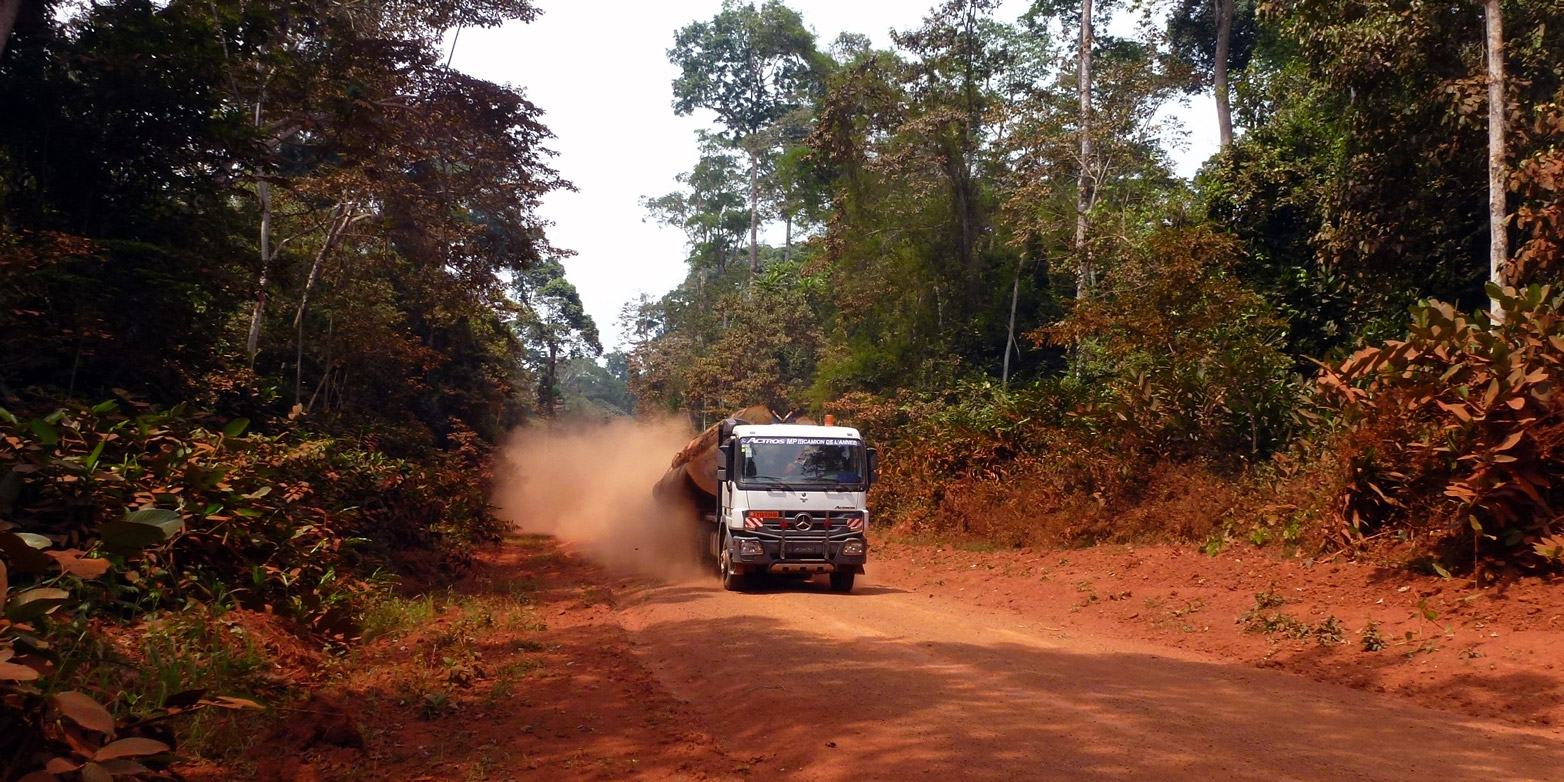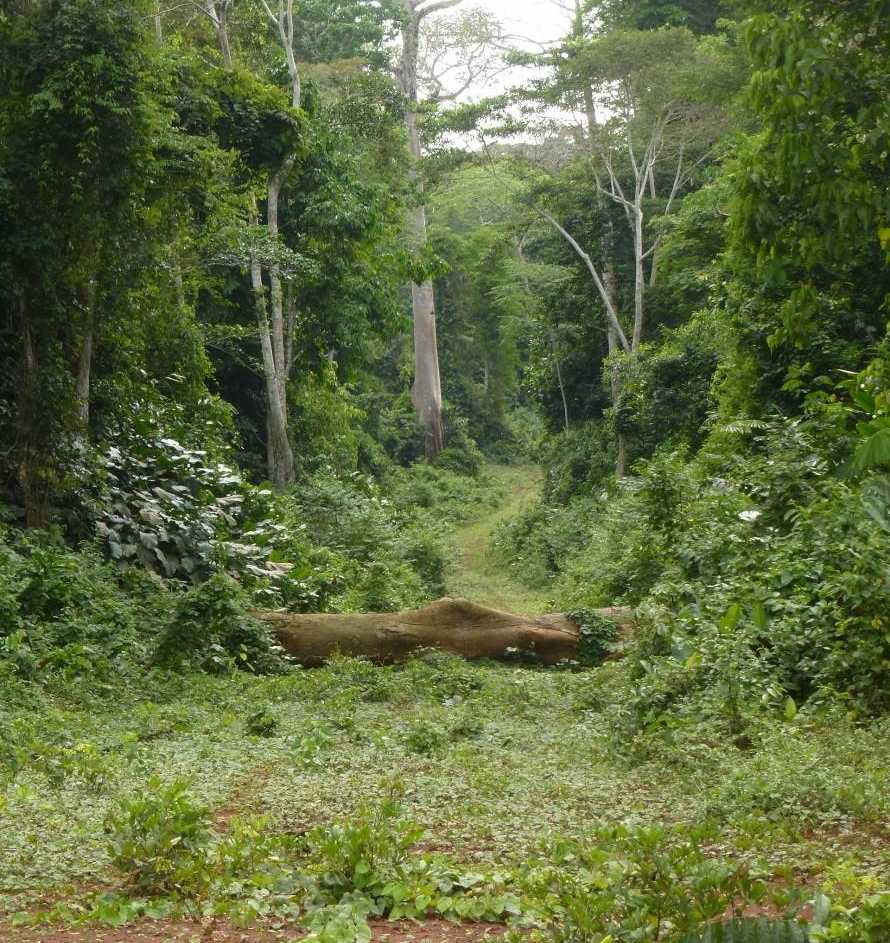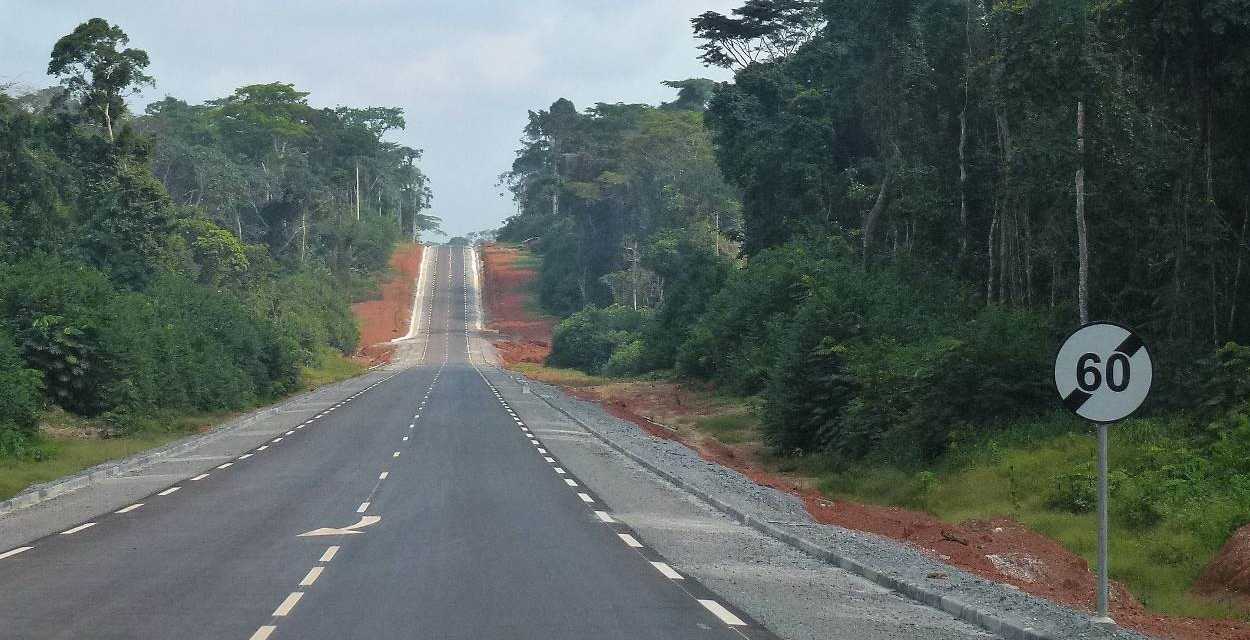Racing through the tropical rainforest
While forestry is the main reason for road building in the Congo Basin, not all roads result in deforestation. The decisive factor is how they’re used, writes Fritz Kleinschroth.
The diversity of butterflies sticking to the radiator grille of the logging truck symbolises the complex conflict between economic development and nature conservation in the Congolese rainforest. Here, in the north of the Republic of Congo, existing logging roads are being upgraded to form a section of the “Trans-African Highway network”. The new road will be the first north-south link cutting directly through the original rainforest. The driver of the logging truck, whom I met on a field trip in 2017, was most enthusiastic about the quality of the highway, which enables him to tear through the tropical forest at 120 km/h.

Paving the way for deforestation
The rainforest in the Congo Basin has long been famous for its inaccessibility – and for the many gorilla and chimpanzee populations that inhabit it. Since it has become widely known that large parts of the forest are criss-crossed by roads, there is a growing fear that the second largest tropical forest in the world will soon suffer the same fate as the largest, the Amazon region: deforestation, which eats its way deeper and deeper into the land along the roads.
As a landscape planner and ecologist, I’m concerned with the impact of human activity on ecosystems and biodiversity. In a recent article1 published in Nature Sustainability, we look at how the road network in the Congo Basin has changed over the last 15 years. Where have new roads emerged? How many have already been abandoned, and reclaimed by the forest? And which of the different types of roads lead to deforestation?
Road atlas with a temporal dimension

On the basis of detailed maps derived for different points in time from Landsat satellite images, we documented the evolution of all roads in an area spanning close to two million km2 of rainforest. The overall network has expanded significantly: between 2003 and 2018 by 60 percent to around 230,000 km. And inside the numerous state concessions for logging, the length of the roads has doubled from 50,000 to 100,000 km. By way of comparison, the entire Swiss road network measures 72,000 km. 2
Selective logging is clearly the main reason behind the construction of new roads. Surprisingly, our analysis also shows that 44 percent of the roads within logging concessions were abandoned by 2018 and are no longer visible in satellite images. Such roads, once no longer in use, are soon overgrown by the forest again.3 Accordingly, there are few traces of deforestation in the area around disused roads – in contrast to the many roads that stay permanently accessible.
Sustainable use of tropical forests

Regulated forestry in tropical forests is not the same as deforestation. On the contrary, in high-forest-cover countries the use of tropical timber can be an important, alternative source of income to other land uses that compete directly with the forest, such as large-scale cultivation of soy or palm oil. Tropical forestry is typically characterised by the selective removal of a few trees, often only one to two per hectare. And within regulated concessions, responsible timber companies use only a small area each year, which is then left alone for about 30 years. Even the roads necessary for transporting the timber are often only accessible for a short time before the companies close them again.
Our results show that selective logging and temporary roads can allow long-term forest cover. Other studies4 in the Congo Basin even indicate that animal species such as gorillas and chimpanzees can coexist with roads and selective forest use, as long as logging concessions effectively prevent poaching.
Not all roads are the same
However, things get problematic when forest roads are converted into permanent public roads. This can be an attractive option for governments, as it keeps construction costs to a minimum, and new roads mean that natural resources and trade routes can be exploited. But once open to the public, they encourage longer-term use, settlements and commercial hunting – all of which have serious consequences for the forest ecosystem.
“The problem is not the roads themselves, but the way they’re used."Fritz Kleinschroth
Annual deforestation rates in the vicinity of roads increased significantly in the course of our study and were highest for existing public roads outside logging concessions.
A planning basis for protecting the rainforest

Nonetheless, I can say for the Congo Basin as a whole that the problem is not the roads themselves, but the way they’re used. So knowing exactly where which type of road is located is crucial for nature conservation and sustainable forest use here.
Many African countries want better road networks for trade, transport and the efficient use of resources. Sweeping nature conservation arguments against any road construction in tropical forests are very often unrealistic and ineffective.
In my opinion, a historical perspective on the dynamics of the road network facilitates sustainable infrastructure planning for the future: not all roads make economic sense, some are completely avoidable and for others, ecological damage could be considerably reduced if they were only temporarily accessible.
In any case, it is now down to the decision-makers to carefully weigh economic benefits against environmental costs for the different types of roads in the world’s second largest rainforest.
References
1 Fritz Kleinschroth et al. Nature Sustainability (2019): external pageRoad expansion and persistence in forests of the Congo Basincall_made. DOI: 10.1038/s41893-019-0310-6
2 Trading Economics: external pageSwiss road networkcall_made
3 Fritz Kleinschroth et al. Journal of Applied Ecology (2016): external pageHow persistent are the impacts of logging roads on Central African forest vegetation?call_made
4 David Morgan et al. Biological Conservation (2018): external pageAfrican apes coexisting with loggingcall_made.
